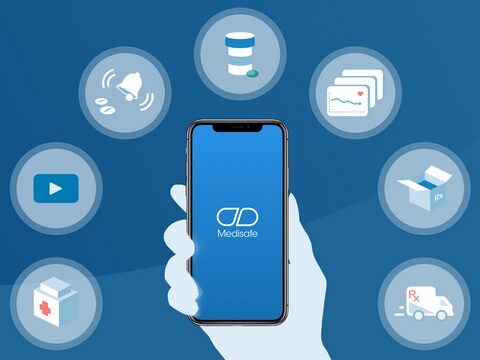by Nataliya Andreychuk, Co-founder and CEO of Viseven
Many pharma brands still shy away from marketing directly to patients, depending on conversion through healthcare providers (HCPs). And it is not hard to see why. Compliance with complex laws and regulations, like Direct-to-Consumer Advertising (DTCA) Rules or the Health Insurance Portability and Accountability Act (HIPAA), can be quite daunting.
This article will cover the importance of putting patients at the center by embracing patient-centric marketing to foster stronger connections with the target audience, gain a competitive edge, and, more importantly, make a real difference in patients’ lives.
Why Is Patient-Centric Marketing Gaining Steam? Let’s Look at the Facts
The rise of patient-centric marketing can be attributed to several major reasons. First, patients now have more access to information than ever, thanks to social media and the world wide web. Most people start their treatment journey by conducting online research. According to statistics, 80% of patients across all age groups learn about their diagnosis online. The vast amount of information makes them more aware of their health conditions and allows them to compare available treatment options and even pharma brands. As a result, LS companies must search for more effective ways to cut through the noise and better help patients receive proper care.
The second reason naturally follows the first one. With so many customers seeking health-related information online and generating a massive amount of personal data, it has become easier for pharmaceutical companies to craft marketing strategies that revolve around a patient’s needs. LS businesses no longer must ask themselves, “Do we need to target HCPs or market directly to patients?” Technological advancement enables them to reconcile HCP engagement with any patient needs, drastically improving the overall marketing efficacy.
Another reason to adopt patient-focused marketing is the increasing patient involvement in their own care. One of the recent studies shows that 93% of patients are ready to share their personal data to receive personalized health-related information. These findings give pharmaceutical companies the green light to start producing customized, compelling, and relevant content for patients.
Practical Ways to Deliver Patient-Centric Marketing
As a rule of thumb, pharma brands should follow three key steps to promote patient centricity: get to know their audience inside out, provide real value to them, and connect through the channels where their customers need them to be.
Know Your Patient
LS businesses need to understand their patients as humans, acknowledging their fears, struggles, motivations, sentiments, and cognitive biases. One way to do that is to create patient journeys. But there is a catch: they must be written from the patient’s point of view. While most journeys typically start with the patient’s first interaction with the pharmaceutical company, a far more efficient approach is to begin when the patient notices something wrong, responds to the new reality, and seeks relief by turning to resources.
Ignoring these important steps will lead to a shallow perception of the patient and a lack of understanding of their problem. It is equally important to understand patients’ actions while waiting for results or after receiving a diagnosis, such as exploring alternative treatment options or seeking information online. Such patients would appreciate useful information about available therapies or any different perspectives.
In the post-diagnosis stage, pharma companies should identify the barriers that cause patients to drop off treatment. Once they are aware of specific reasons, they can develop effective marketing strategies to improve patient compliance. One of the examples is when a pharma company uses artificial intelligence (AI) to understand the causes of parents’ reluctance to vaccinate their children. Some parents may exhibit optimism bias, believing there is no chance their child will contract the disease, while others are heavily influenced by how their close environment behaves. Understanding their fears and needs enables pharmaceutical companies to effectively engage with them, sending the right message backed up with an abundance of compelling evidence.
To fully understand patients’ needs, some companies approach seasoned marketing services providers for assistance. Let’s take Viseven as an example. Our company is a leading player in the MarTech industry worldwide, providing clients with comprehensive customer journeys of any scale and complexity. Our findings allow pharma and LS companies to walk a mile in patients’ shoes and create highly personalized and data-driven marketing strategies.
Our powerful data analytics service suite lets us collect complete data about patients, sort it out, get rid of unnecessary clutter, and present it in a graphical easy-to-understand format. The results? Brand loyalty, increased market share, and, more importantly, improved patient compliance and treatment outcomes.
Leverage Data to Be Useful
Even if pharma brands in most countries cannot sell directly to patients, they can become trusted experts by providing valuable health-related information. The call to action may remain to consult an HCP, but still, there is a lot they can do to generate interest in their pharmaceutical products and improve patient education. With the help of the right technology and data, LS businesses can produce relevant and useful content to help patients in their journey to recovery.
However, when focusing solely on their treatment, companies risk appearing overly “promotional,” which can repel potential customers. It is important to provide information about the entire spectrum of what patients are up against with their conditions. For example, people recently diagnosed with HIV (Human Immunodeficiency Virus) may appreciate content related to social stigma and strategies to overcome it. Patients with Multiple Sclerosis are likely to benefit from helpful resources on managing side effects from their medicine. Such content would make their therapy more tolerable, significantly increasing patient compliance rates. The key lies in ensuring the right messaging goes to the right patient.
One more thing to remember is that the target audience is patients, not HCPs. As such, it is critical to communicate at an appropriate health literacy level. Using medical jargon, complex multisyllabic words, and lengthy sentences can deter pharma companies from achieving their main goal, which is to educate most of the population.
Engage with Patients Where They Are
To put patients’ needs first, engaging with them through the channels where they spend their time while also staying relevant is crucial. For instance, if patients spend most of their time on social media, like Twitter or Facebook, companies should join online discussions rather than interrupt and try to dominate them. Focusing exclusively on one’s brand is like snatching the microphone from the current speaker only to talk about oneself.
LS brands must remember that social media is about building social connections rather than bombarding users with in-your-face advertisements. Pharmaceutical companies have to offer information that helps patients accept and manage their conditions. Even if the topics aren’t closely related to the brand, providing value to patients without expecting anything in exchange is important.
By choosing the right channels and providing relevant content, companies can build a patient community they can learn from. How do patients’ needs vary across different segments? What do they react to? Engaging through digital channels not only makes patients more educated care partners but also sheds some light on their dreams, hopes, complaints, expectations, biases, and fears.
Viseven has been helping LS and pharma clients engage with their customers for over 14 consecutive years. With the help of robust technology, our seasoned specialists identify the right digital channel mix for engagement and create personalized, relevant, yet interactive content. We also integrate all these channels into a single ecosystem, which enables clients to increase their engagement by up to 250% and deliver consistent messaging to patients.
Patient-Focused Marketing Improves Lives
Listening to patients’ voices and empathizing with them gives pharma and LS companies a superpower – an educated and loyal consumer that complies with their therapy. When a business understands its patients’ needs, helps them in their journey, and engages them the way they prefer, patients conclude that the brand can be trusted and holds more value than others in the market. When implemented correctly, patient-focused marketing can help boost brand loyalty, lower hospitalization rates, and improve the quality of life for patients.
About Viseven
Viseven is a future inspired global MarTech Services Provider for Pharma and Life Sciences industries with more than a decade of experience. Viseven’s digital transformation center offers innovative solutions for companies of different sizes and digital maturity levels by merging marketing and digital technology expertise with innovation and strategic capabilities. The company’s solutions, products, and services are actively used by the TOP 100 Pharma and Life Sciences companies in more than 50 countries around the globe.
Follow Viseven on social media: LinkedIn, Twitter, YouTube, Facebook








